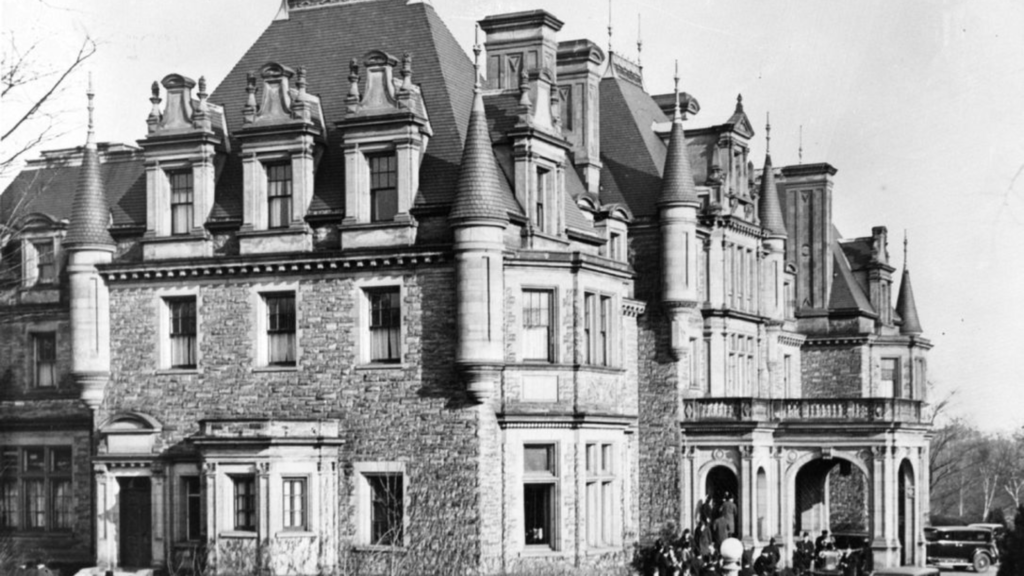Chorley Park By Bruce Bell
The first Vice-Regal Residence of Upper Canada, the Official Residence of the Lt Governor of Ontario, was a simple one-storey frame house built at Fort York.
Built in c1797 the home was occupied by Lieutenant Governor Peter Hunter but was destroyed during the War of 1812 when a nearby powder magazine exploded.
The second residence then located on the block now occupied by Roy Thomson Hall at Simoce and King Street was originally the home of Chief Justice John Elmsley built in 1798.
After the building was destroyed by fire in 1862 plans were put forward that a third home to be “more opulent than any other in the province” should be built on the same site.
Completed in 1870 by one of Toronto’s finest architects Henry Langley the new Lt Governors Residence built in the French Second Empire style featured sloped mansard roofs with both the drawing room on the first floor and the state bedroom on the second floor facing Lake Ontario over a large landscaped garden. Sadly, this exceptional home was torn down in 1912 to make way for more railway land.
After the destruction of Langley’s masterpiece, it was time for a 4th Official Residence and in 1915 after 3 years of construction we got the grandest of them all, Chorley Park a monumental French Renaissance inspired château.
In a mere 100 years from a clapboard cabin at Fort York to a lavish castle in Rosedale, Chorley Park was not only the most copious home ever constructed in Toronto but probably in all of Canada.
This great palace rose up with tall chimneys, detailed cornices, dormer windows each with canopies to shade the summer sun and corner turrets giving the castle a distinctive French style, then adding to this splendor the entire roof was covered red terra-cotta tiles.
It only served as the Official Residence of the Lt Governor for a mere 22 years deep in the heart of Rosedale and probably because of it’s then out of the way location made its ultimate demise an easier decision for the government of the day.
I also felt had this great home been built on Bloor Street at the head of Church Street like it was originally proposed thus creating a grander vista for the magnificent residence it might still be standing today.
However in 1937 during the Great Depression the Provincial government thinking such an outlandish palace was too expensive to maintain (965 tons of coal a year to operate whereas the average home used only six tons) sold the grand estate to the federal government where it served as a military hospital during World War II, then the Toronto headquarters of the RCMP, and finally a home for refugees of the 1956 Hungarian uprising.
In 1961 just as the ultra modern New City Hall and the Gardiner Expressway were being built the great Chorley Park home that once overlooked the Don Valley was torn down with nothing ever built on the site to this day and nothing was ever built to replace it.
Since 1937 Ontario’s Lt Governor presently uses a suite of rooms (originally built as the Speaker’s apartment) for receptions at the Ontario Legislature Building and lives in his or her private Toronto home or is provided a rented residence elsewhere in the city.
While Chorley Park might have been too extravagant as a residence it should have been maintained as a tourist attraction like Castle Loma, or a veteran’s hospital or a school. Its destruction was nothing but a waste, a total utter waste that Toronto’s heritage has never fully recovered from.
